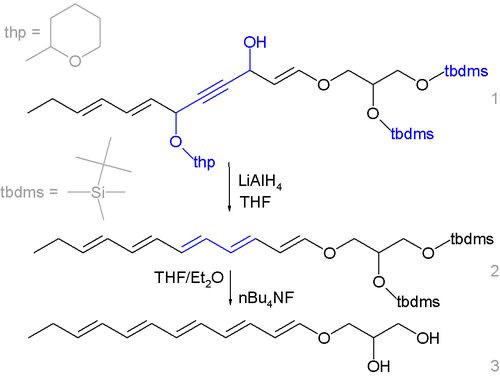The Whiting reaction is an organic reaction converting a propargyl diol into a diene using lithium aluminium hydride. [1]

This organic reduction has been applied in the synthesis of fecapentaene, a suspected cause of colon cancer: [2]
Protecting groups are tetrahydropyranyl and TBSMS; the final step is deprotection with tetra-n-butylammonium fluoride.
References
- ^ Nayler, P.; Whiting, M. C. J. Chem. Soc. 1954, 4006–09.
- ^ Synthesis of crystalline (.+-.)-fecapentaene Hans Rudolf Pfaendler, Franz Karl Maier, and Sonja Klar J. Am. Chem. Soc.; 1986; 108(6) pp. 1338–39. ( doi: 10.1021/ja00266a057)
